A discussion on the “lumen race” and why measuring the quality of a light solely by the lumen count is misguided.
As many of our readers and perhaps non-readers know, Peli Products is widely held as the global leader in the manufacture of protective cases and containers. What fewer of those of you may know is that Peli is also a leader in the manufacture of advanced lighting systems, such as torches, headlamps, and work lights. Although we may be thought of principally for our cases, we have been in the lighting industry for some time, and we are very familiar with what has been termed by some as “the lumen race”. In this post we will explain what lumens are, what the ANSI standards are, and most importantly what exactly the lumen race is as well as dispel the notion that lumens are the one and only aspect to consider when evaluating the quality of a light.
What are Lumens?
Before delving deeper into the subject matter of this post, a definition of lumens will be helpful. Lumens are a measure of the total amount of visible light to the human eye from a lamp or light source in all directions. This means that the higher the lumen count, the brighter the emitted light is from the the torch, headlamp or work light. Consequently, lumens are the measurement that is used to determine the light output of a light according to ANSI Standards.
What are ANSI Standards?
The American National Standards Institute (ANSI) developed performance standards and symbols to effectively communicate a light’s features and benefits. See a short overview below.
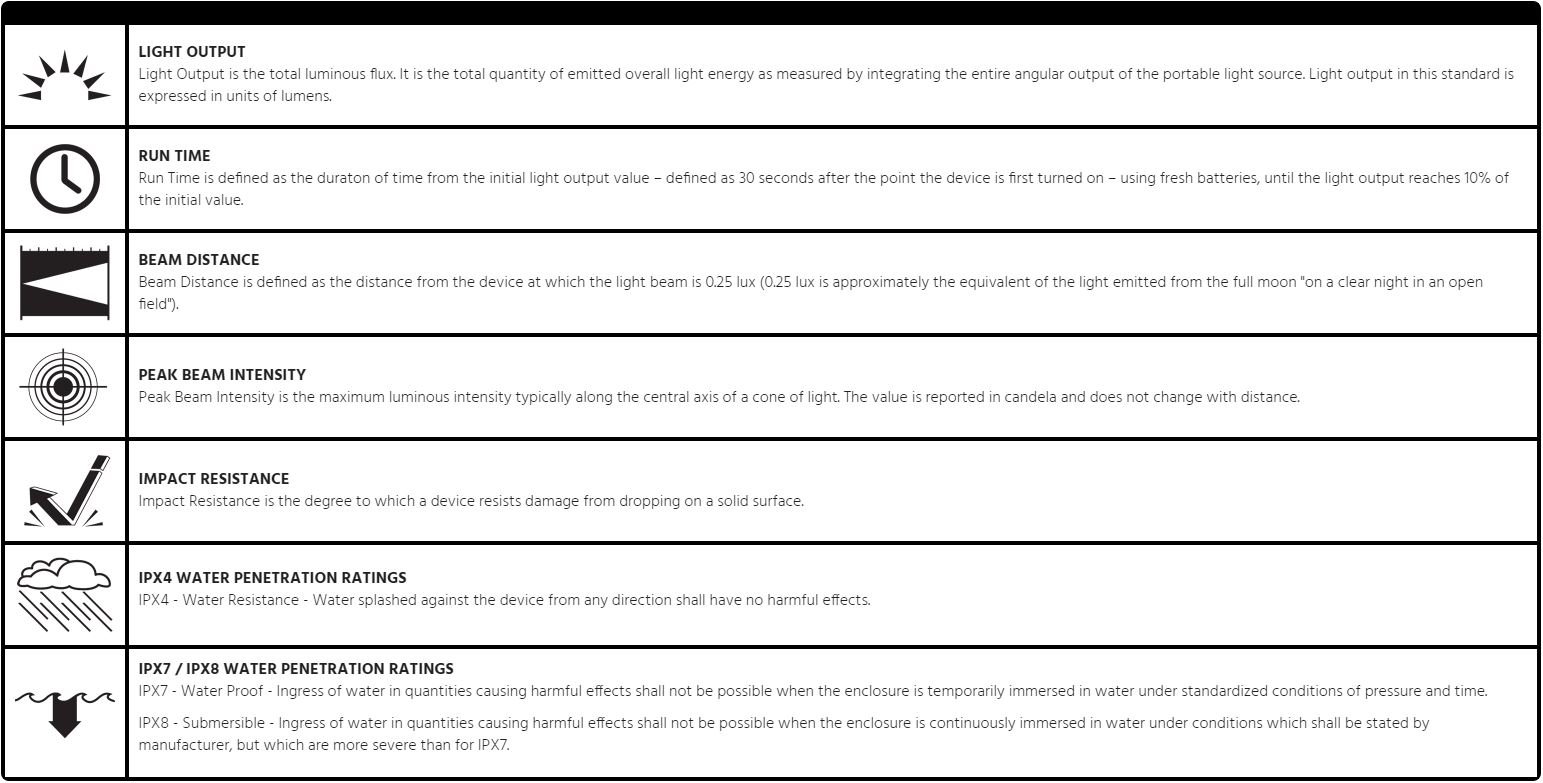
LIGHT OUTPUT
Light output, once again, is a measurement of the brightness of the light. And to measure this brightness, we express it in the aforementioned unit of measurement called Lumens.
PEAK BEAM INTENSITY
This is the maximum luminous intensity typically along the central axis of a cone of light. Essentially, this measures the light intensity at the brightest point along the beam. Contrary to light output, peak beam intensity is measured in Candela and does not change with distance.
BEAM DISTANCE
The beam distance is the measure of the distance the light will travel. It is measured by calculating how far the light beam will shine before it diminishes to the equivalent light of the moon.
RUN-TIME
Run-time is essentially how long the light will run. It is calculated by taking the length of time it takes for the light output to drop to 10% of the rated output on new batteries, rounded to the nearest quarter hour.
IMPACT-RESISTANCE
Impact Resistance is measured in metres and is tested by dropping the light onto a concrete surface with all accessories and batteries installed, from a specified height. To be considered impact resistant at various heights, it must be 100% functional after the drops and be free of any cracks or breaks at each height tested.
WATER-RESISTANCE
Water-resistance should be self-explanatory. There are various levels of water-resistance as rated by the Ingress Protection (IP) ratings system.
Why lumens aren’t everything
Having established the above information, the lumen race can be described. The so-called lumen race is a perceived competition between light manufacturers to produce the light with the highest lumen level possible. Thus, they can market their lights as better than the competition because they have more lumens on a given light.
As one of Peli's Sales Managers said recently, “When it comes to lights, Lumens speak to the consumer most, but it is similar to when digital cameras came out. First, the camera with four megapixels was better than the one with three. Next it was the camera with five that was better than the one with four and so on and so on, until it reached a point where consumers found that megapixels don’t necessarily make a camera better than another.”
What you can take away from the comments above is that there are many other important factors to consider with which to evaluate the quality of a light versus another.
The previously quoted Peli representative comments further, “Another good example to compare to the lumen race is horsepower in the automotive industry. Would you consider a Toyota with more horsepower than a similar model of BMW to be a better car just because it has more horsepower?”
Thus, Lumens are not everything. It is the combination between features such as runtime, beam distance, impact-resistance and much more, that really determines the quality of a light. One aspect or feature of a torch does not determine whether it is a better light.
Brand Matters
The other important aspect to consider is the brand. While Peli, for example, may be more known for its cases and containers, as another Peli expert put it recently when asked to comment, “Peli’s lights are produced with the same ethos as the cases. They’re built to last a lifetime.” This cannot necessarily be said of other brands.
Speaking of the brand and the lumens that are quoted, it is important to take into account how certain brands measure lumens. According to some within Peli, many manufacturers outright lie about lumens. Others will give you the peak lumen level, which is essentially the initial lumen level that one can expect immediately upon turning on the torch at its highest brightness setting. While this might make sense to some, the issue with this is that that lumen level can only be held for a short time. While the lumen level of one light may be 1000 lumens initially, that level will be significantly lower within minutes of turning on the light. Peli on the other hand will quote a number that is sustainable for a longer period of run-time. This inherently means the lumen level quoted will be lower, but it also is a truer value that a consumer can trust to be sustainable for a longer period of time. The image below better demonstrates this concept.
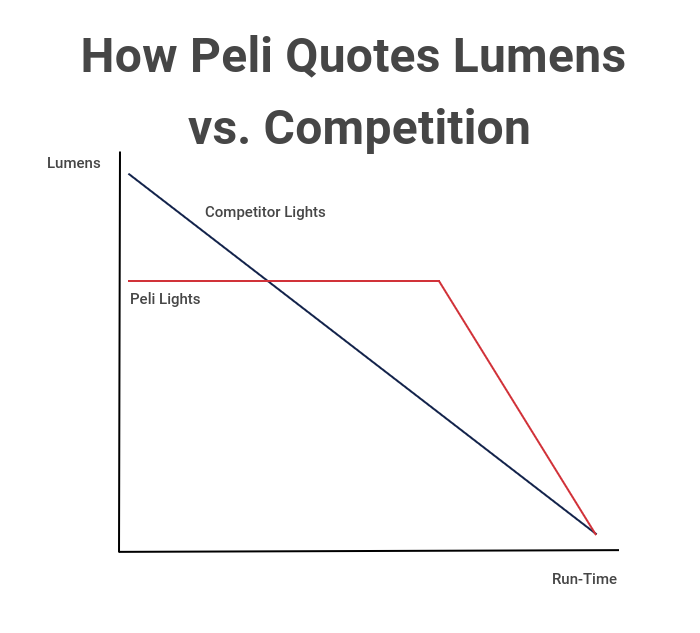
It is also important to consider the ANSI standards with regards to testing. ANSI not only established the features to be measured to determine the quality of a light, but also regulates the testing. Many brands do not necessarily adhere to this testing or the ANSI standards at all. ANSI standards dictate that lumens can be measured 10 seconds after turning on the flashlight. Thus, a manufacturer can only quote the lumen level that is measured after 10 seconds, while the run-time is measured until 10% of the battery life is reached. It is important for the consumer to consider if a certain brand is using ANSI standards to test their lights or not. That may change everything.
What about explosion-proof lights? Do lumens matter?
The short answer is, yes. But they are much less important as other features. When it comes to ATEX certified explosion-proof lights, it is important to take into account what can cause an explosion. It is the spark when turning on the light and even more important is the heat that is given off by the light. Logically, the higher the lumen level, the higher the temperature, and thus the greater the chance of an accidental explosion in a hazardous area. Thus, ATEX lights will always have lower lumen levels than other professional torches, such as tactical torches or work lights. Nevertheless, as with all other lights there are multiple features and benefits to consider when evaluating lighting choices apart from lumens. However, when evaluating ATEX lights the most important thing to consider is whether or not the manufacturer of the explosion-proof light is indeed obtaining true certifications according to the EU ATEX directive. Everything else should be of secondary importance, especially the lumens.
Peli Products makes sure to comply 100% with all regulations and standards. Peli torches are built with the highest quality materials and to comply with the latest ATEX Directive (2014/34/EU).
So, what can we conclude then about Lumens and light quality? Lumens are important, but you should consider many different aspects and features of a light to determine whether a light is the right fit for you.
If you are interested in learning more about Peli’s lights and what we can offer, click on the button below to see our full range of lights.





.png)





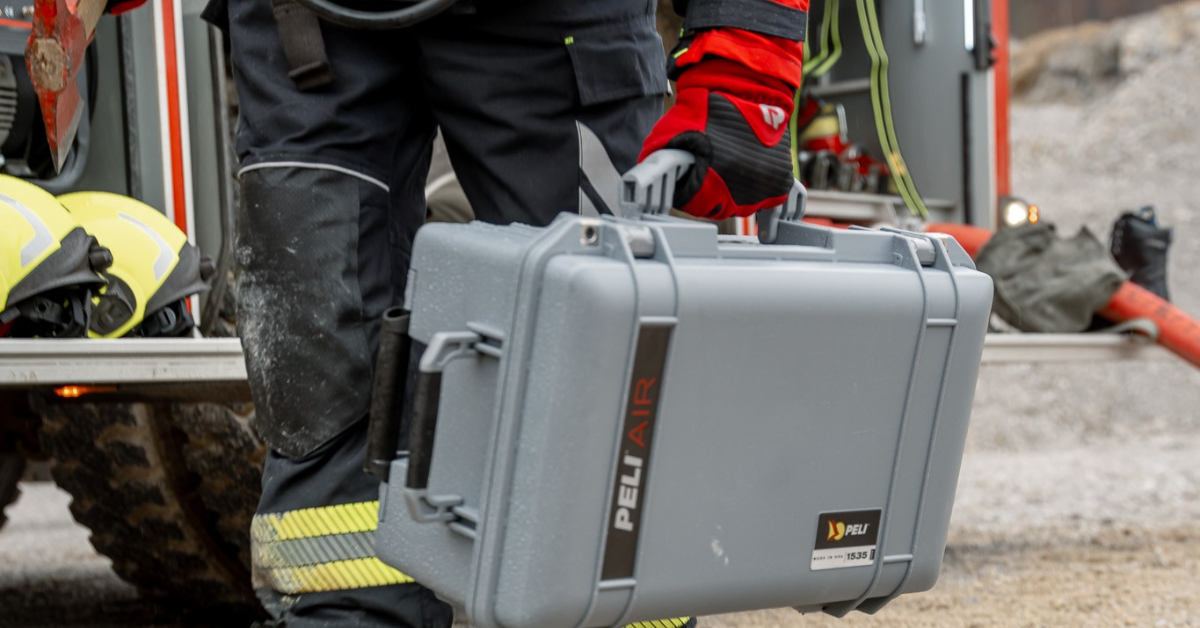





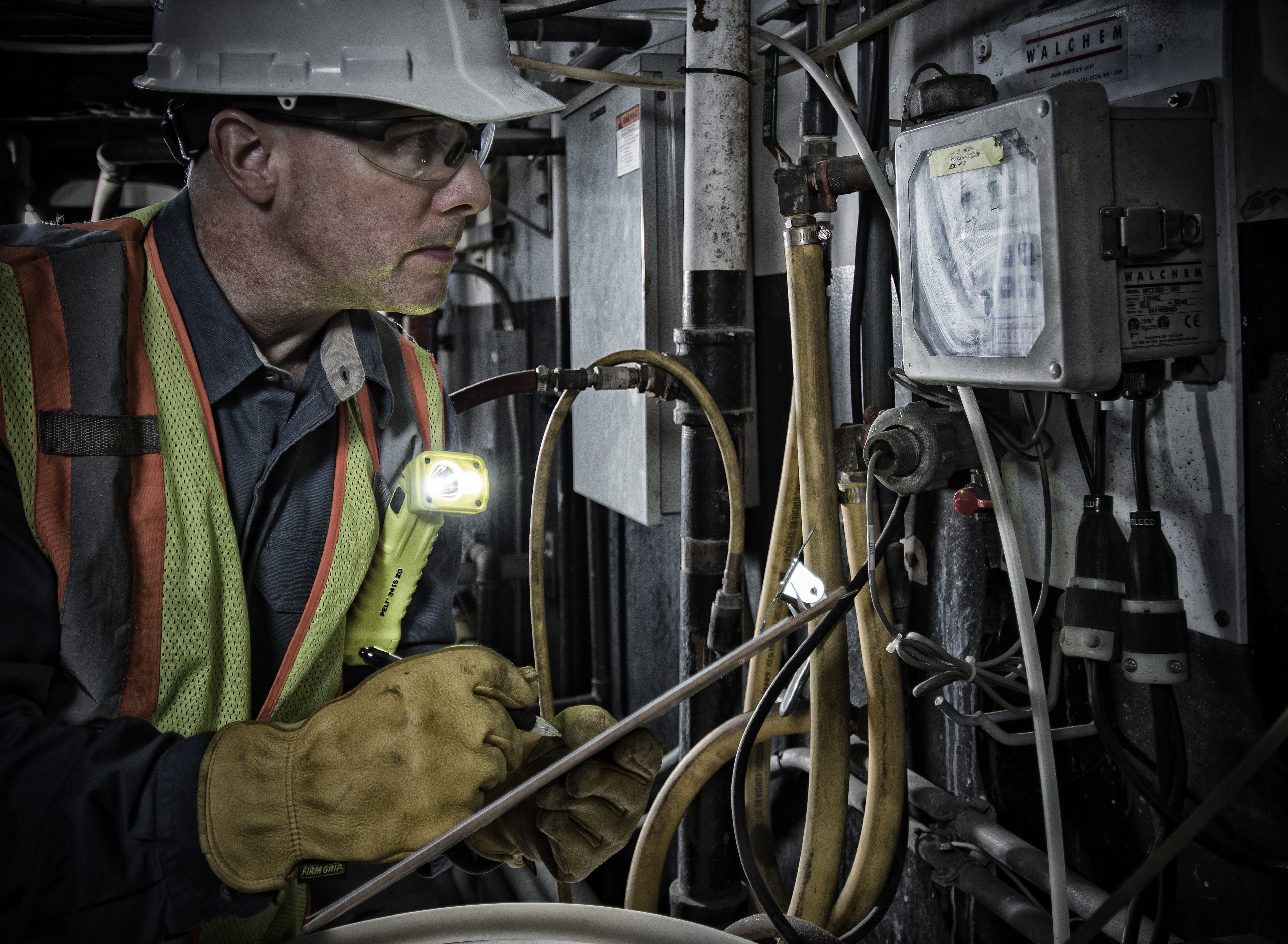


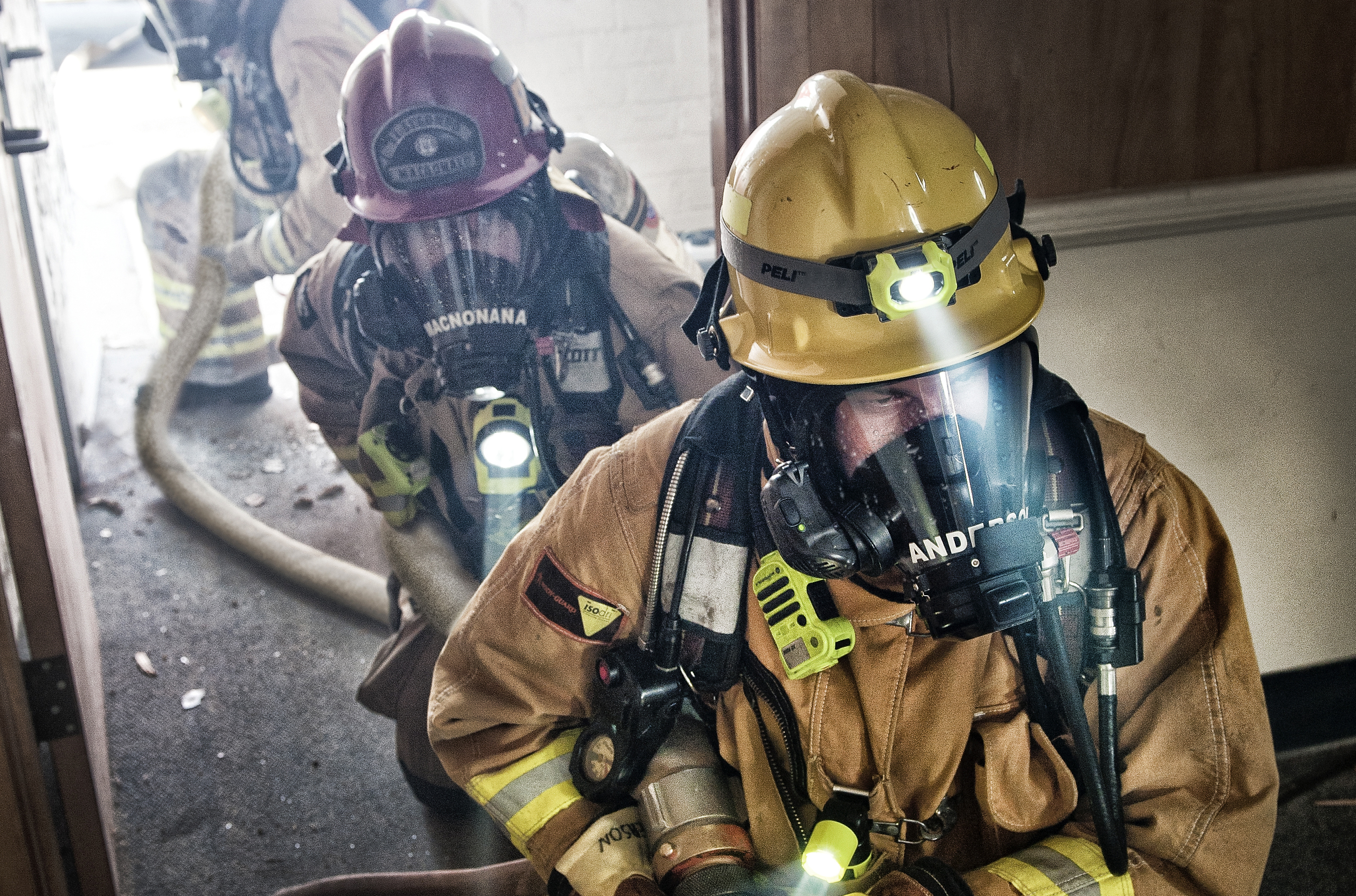
Post a comment